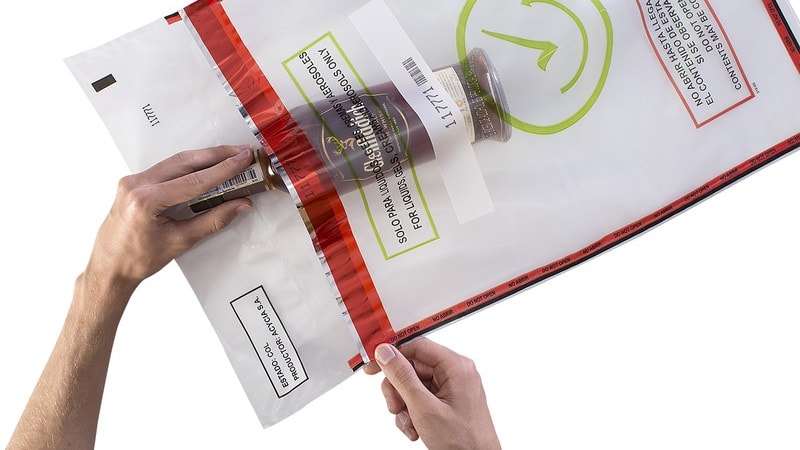International airports follow strict security protocols to protect passengers and prevent unauthorized items from entering flights. Duty-free bags play a key role in this—allowing travelers to carry duty-free liquids, perfumes, and alcohol without violating airport regulations.
These transparent co-ex film bags feature proprietary wide welding and hidden markings, making tampering easily detectable. In this article, we’ll discuss how to use duty-free bags correctly for a seamless travel experience and why they’re required for certain duty-free purchases.
What Are Duty-Free Bags?
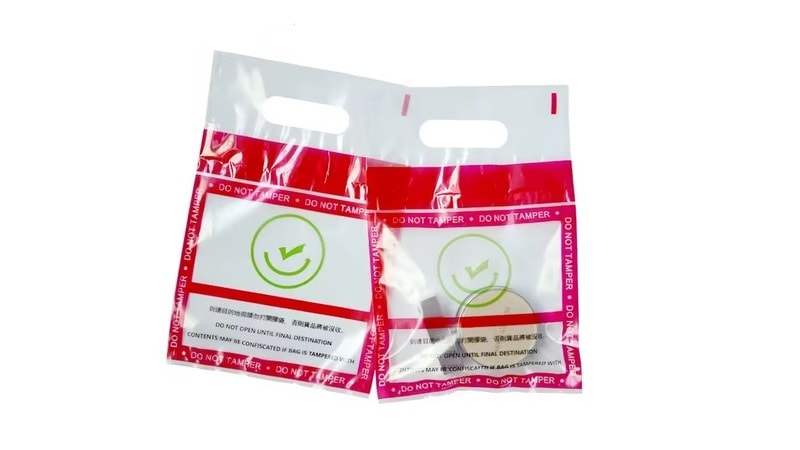
Duty-free bags are sealed, tamper-evident bags used to store tax-free purchases made at airport duty-free shops. These bags ensure that duty-free items, such as liquor, perfumes, and luxury goods, remain sealed until passengers reach their final destination.
The main features of duty-free bags include:
- Tamper-Evident Seal: Once sealed at the store, the bag cannot be reopened without showing signs of tampering.
- Transparent Design: Security officers can inspect the contents without opening the bag.
- Receipt Pocket: A dedicated section to store purchase receipts, which are required for verification at checkpoints.
- Durable Material: Made of thick plastic to prevent tearing or damage during travel.
Duty-free bags are not just for convenience—they help travelers comply with international aviation regulations. Liquids over 100ml are usually not allowed in carry-on luggage, but duty-free liquids in sealed bags are exempt from this rule in many cases. However, passengers must follow specific guidelines to avoid confiscation.
Why Are Duty-Free Bags Important for Airport Security?
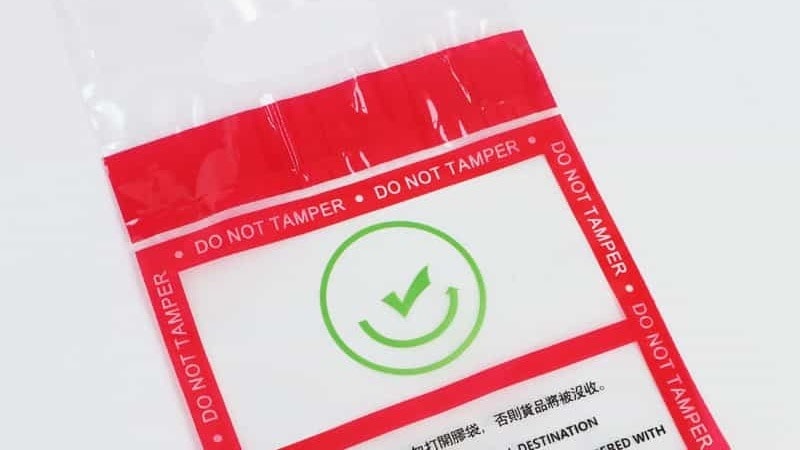
Duty-free bags help enhance airport security by preventing tampering with duty-free purchases. Without these sealed bags—items like luxury items, liquor, and electronics could be altered or misused. This is why airports enforce strict regulations, especially for passengers carrying duty-free goods during international flights.
Tamper-evident duty-free bags feature multiple warning messages printed on the packaging, discouraging unauthorized access. These bags also include hidden markings and corresponding serial numbers that match receipts. Security officers use these features to verify purchases and prevent smuggling attempts.
Duty-free bags also speed up screenings since officers can inspect contents without opening them. The clear material allows them to confirm items like checked baggage liquids or personal items without delays. This reduces congestion at checkpoints and makes it easier for travelers to board aircraft without unnecessary security checks.
How to Use Duty-Free Bags at Airports
Step 1: Purchase Duty-Free Items with Precision
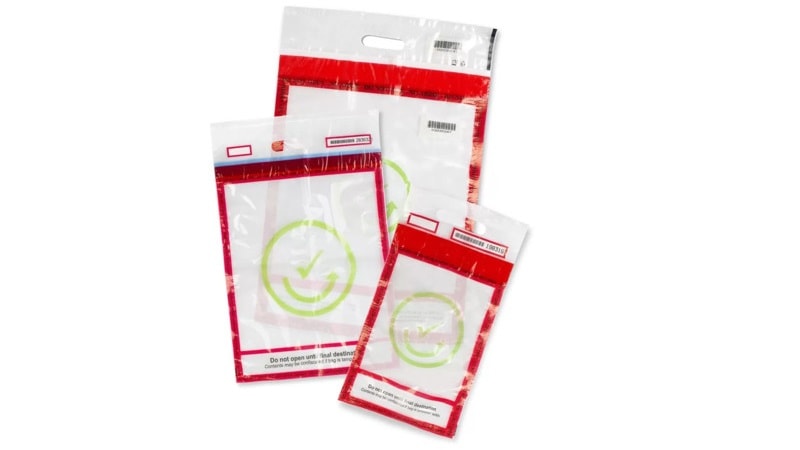
When shopping at a duty-free shop, make sure your items are packed in an official duty-free bag at the time of purchase. Liquor, cosmetics, and electronics must be sealed in security-approved STEBs to meet airport regulations and prevent confiscation during security checks. Always ask store staff about specific regulations to avoid unexpected issues at customs and security checkpoints.
Step 2: Seal and Label the Bag
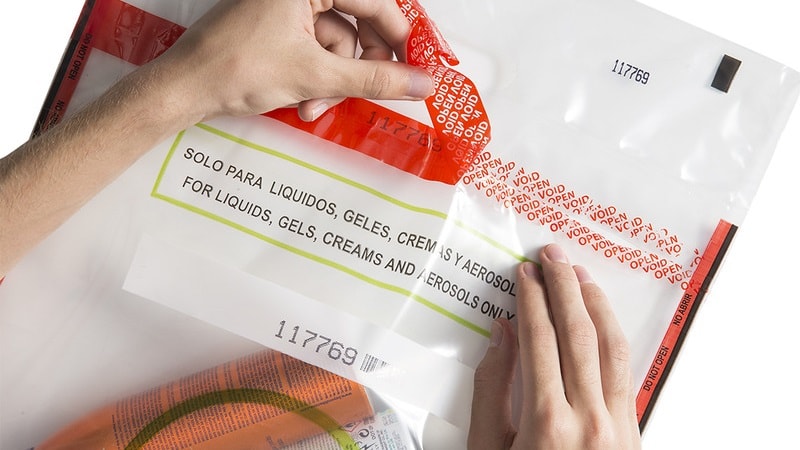
After you purchase duty-free items, the cashier will seal them in a tamper-evident duty-free bag using security bag tape. Some bags also include security labels that warn against opening them before reaching your final destination. This is a critical step.
Observe the sealing process to ensure the bag is properly secured with advanced security tape and that all items are enclosed. Before leaving the store:
- Verify product details – Ensure the items inside match what you purchased.
- Check the receipt – The display receipt should be inside the bag and clearly visible.
- Match serial numbers – Compare product codes and manufacturer details with your receipt.
- Inspect the seal – Confirm that the bag is properly sealed with no signs of tampering.
Mistakes in labeling or packaging can cause delays at security, especially if you have a layover in a country with stricter airport regulations.
Step 3: Carry Duty-Free Bags Through Security Checks
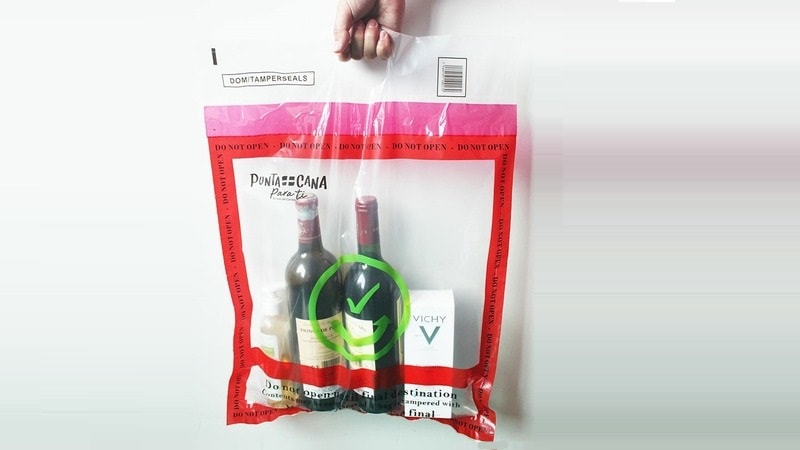
When you reach the security checkpoint, place your Security Tamper-Evident Bag (STEB) separately on the conveyor belt for X-ray screening. Since TE bags are made of transparent co-ex film, security personnel can inspect the contents without opening them.
This minimizes unnecessary handling and prevents accidental damage to the seal. However, if the bag appears tampered with—officers may conduct additional screening or confiscate the items. So, it is important to follow airport regulations to avoid issues at security.
If your flight has a layover at an international airport, check if your duty-free items meet the airport’s security standards. Some countries allow sealed duty-free liquor in carry-on bags, while others require transferring passengers to store liquids in checked luggage.
Step 4: Pass Through Customs and Board the Aircraft
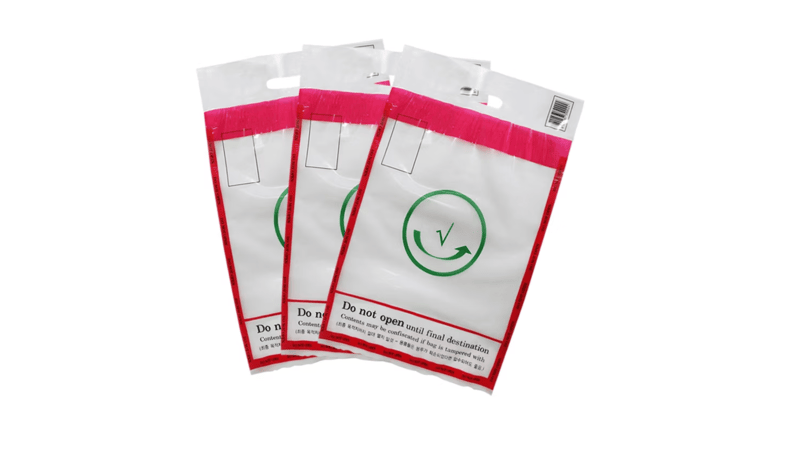
After security checks, keep your duty-free bag sealed until you reach your final destination. Customs officials may request your receipt and boarding pass to confirm the purchase date and location. Make sure your bag remains undamaged to avoid complications.
If a security seal appears tampered with, airport officials may confiscate the items or charge additional taxes upon arrival. Many countries have strict import limits on alcohol, tobacco, and luxury goods, even if they were purchased duty-free. If your items exceed the duty-free allowance, you may need to pay import taxes or declare them to avoid fines.
Step 5: Store and Use Duty-Free Items Properly
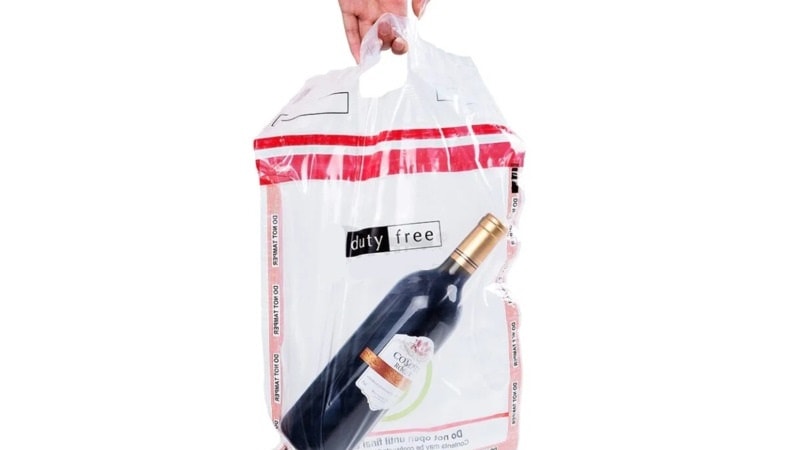
Once you’ve cleared customs, store your duty-free purchases carefully to prevent damage. When boarding, avoid rough handling and store the duty-free bag safely in your carry-on or under your seat. Avoid placing it in overhead bins where it can shift and break. Consider using a padded compartment within your checked bags to provide additional protection.
If you purchased duty-free electronics, check that the manufacturer code on the product matches your receipt. Some products may come with international warranties, so keep all documents for potential claims. By following these steps, you can enjoy your duty-free purchases without hassle and ensure they remain in perfect condition for use!
Common Mistakes to Avoid When Using Duty-Free Bags
Mistake 1: Buying Duty-Free on the First Leg of a Multi-Stop Trip
Many people buy duty-free goods at their starting airport, especially for trips with layovers. It can cause problems. Items may be taken away during stopovers. That is because not all airports recognize sealed bags from other places.
Solution: To avoid this, plan your duty-free purchases strategically. The safest approach is to buy your items at the last airport before you reach your final destination. Alternatively, if you must purchase earlier—thoroughly research the transit rules of each airport on your route. This proactive measure will prevent disappointment and the expense of confiscated goods.
Mistake 2: Opening the Sealed Duty-Free Bag
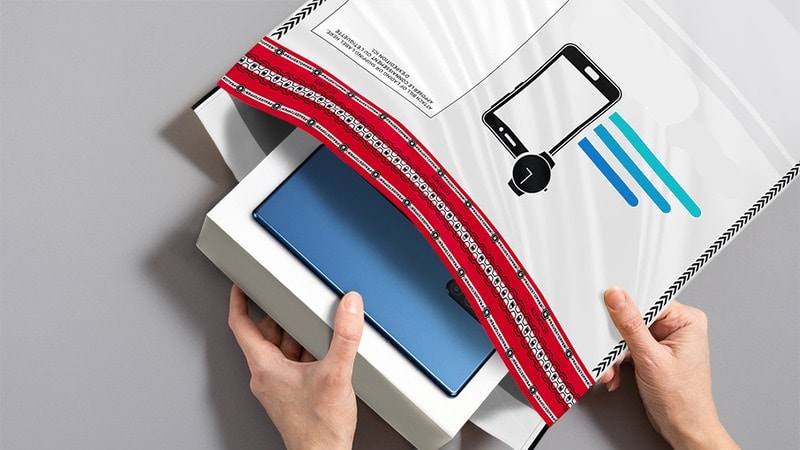
A frequent error among travelers is opening the sealed duty-free bag, known as a STEB, for repacking or inspection. They often assume that a brief opening will not cause any issues. However, security officers are strict about the integrity of these sealed bags. Once the seal is broken, the items are no longer considered secure even if they were originally purchased duty-free.
Solution: To avoid this, keep your duty-free bag sealed until you reach your final destination and clear the airport customs. This basic rule keeps your items safe and prevents them from being taken away. Keeping the seal unbroken is vital for an easy trip through airport security.
Mistake 3: Assuming All Airports Follow the Same Rules
Travelers often assume that all airports adhere to the same duty-free regulations. However, this is not the case. A duty-free purchase that is permitted in one country might be prohibited in another. This discrepancy can lead to confusion and problems during transit.
Solution: To avoid this, research the security policies of all transit and destination airports before your trip. This comprehensive approach will keep you from having problems with your duty-free items. Knowing the rules for each location is essential for a seamless travel experience.
Airport Security Rule for Duty-Free Bags
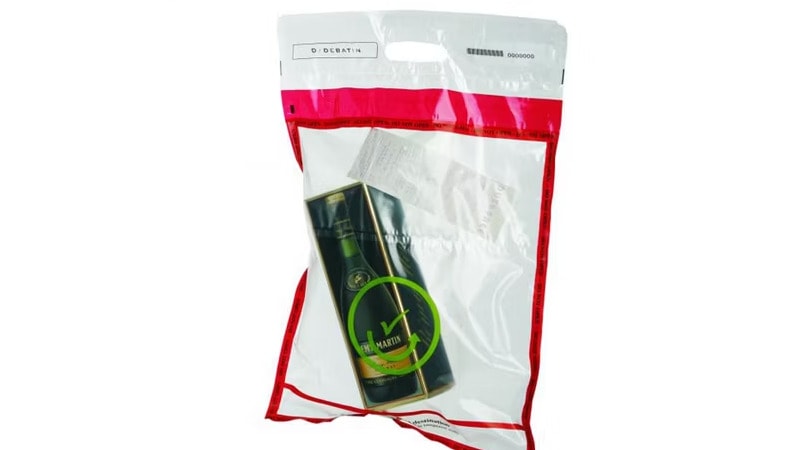
When traveling with duty-free purchases, understanding security regulations is essential. Most airports follow the 3-1-1 liquids rule, which limits liquids, gels, and aerosols in carry-on luggage to containers of 100ml (3.4 oz) or less.
However, duty-free liquids are an exception if they meet specific conditions:
- The liquid is in a sealed, tamper-evident, duty-free bag (STEB) provided by the store.
- The receipt is visible inside the bag and shows the purchase was made within the last 48 hours.
- The bag has not been opened since purchase.
To ensure compliance, travelers must follow these conditions at security checkpoints. Also, keep duty-free bags separate from other carry-on items. Failure to follow these rules may lead to confiscation, especially during security screenings for connecting flights.
International Regulations and Country-Specific Policies
Different countries and airlines have varying rules for duty-free bags. While most follow general aviation security guidelines, some impose stricter policies. The table below outlines key regulations travelers should be aware of:
| Region/Country | Duty-Free Liquid Regulations | Key Considerations |
|---|---|---|
| European Union (EU) | Liquids over 100ml allowed in sealed STEBs with visible receipt | Rules may not apply when transferring to non-EU destinations |
| United States (TSA) | Liquids over 100ml allowed in sealed STEBs with receipts dated within 48 hours of travel | Standard security procedures apply |
| United Kingdom (UK) | Generally follows EU guidelines | Verify rules for transfers to non-EU countries |
| Asia (Singapore, Dubai) | Strict enforcement of sealed STEB requirements | Improperly sealed bags may be confiscated |
| Asia (China, Japan) | Varied regulations across airports | Increased scrutiny of liquids at some locations |
| Australia and New Zealand | Strict screening; duty-free purchases must remain sealed until exiting the airport | Adherence to stringent sealing requirements is crucial |
| South America and Africa | Policies vary significantly between airports; some do not recognize STEBs | Verify specific airport rules before travel to avoid confiscation of liquids over 100ml |
Understanding these regulations helps avoid confiscation and ensures a smooth security process when traveling with duty-free purchases.
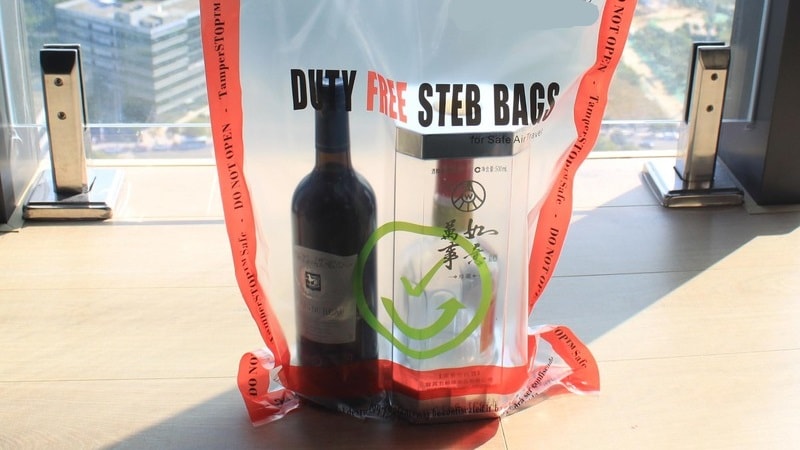
FAQs
What is the difference between a duty-free bag and a regular shopping bag?
Duty-free bags are tamper-evident, sealed for security, and designed to show if they’ve been opened. Regular shopping bags lack these security features.
Can I bring duty-free bags on a connecting flight?
Yes, but regulations vary by airport. Check the rules of each transit airport before buying. Some airports require the bags to remain sealed until the final destination. Others may have different rules.
Can I buy duty-free items after security if I’m on a layover?
Yes, you can buy duty-free items in the secure area of a layover airport. However, be aware of the destination country’s import rules.
Conclusion
Duty-free bags are an essential part of modern air travel. They ensure security, compliance with regulations, and convenience for passengers. By using these tamper-evident solutions, you can prevent unauthorized access to your duty-free items. So, every time you travel —ensure your duty-free items are protected with duty-free bags!
Shosky Security’s Duty-Free Bags for Secure Travel
Shosky Security specializes in offering high-quality tamper-evident solutions, including duty-free security bags designed for airport compliance. With a focus on innovation and reliability, our solutions help prevent tampering and fraud! Contact us today for more details.
